In the last post, I illustrated the overall form of the Devil’s Walking Stick (Aralia spinosa). Now we will look at what happens to the large, light-colored flower clusters at the top of the plant.
The flowers of the Devil’s Walking Stick are tiny, and there are hundreds of them on each plant. In the photograph above, three flowers are illustrated with a flower bud between two of them. Each flower has five petals and five stamens. The petals are recurved and the anthers are still present on the stamens. The flowers are quite attractive to bees and other small insects.
The photograph above shows a later stage in flower development. The flowers have been pollinated and the base of the flower (which contains the ovary) is beginning to enlarge.
Each fertilized flower develops into a small black berry. This is such a heavy load for the plant that it is often bent over from the weight.
Here I am holding a cluster of berries, so you can get some idea of the size.
The berries are quite handsome. They are also eagerly consumed by birds.
Here is a closer of a group of berries. The remains of the stamens can still be seen protruding from the surface.

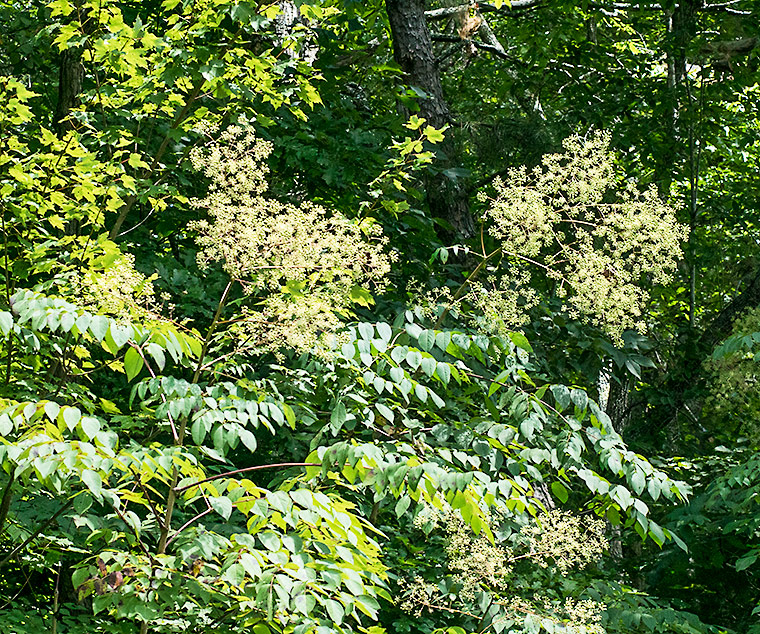
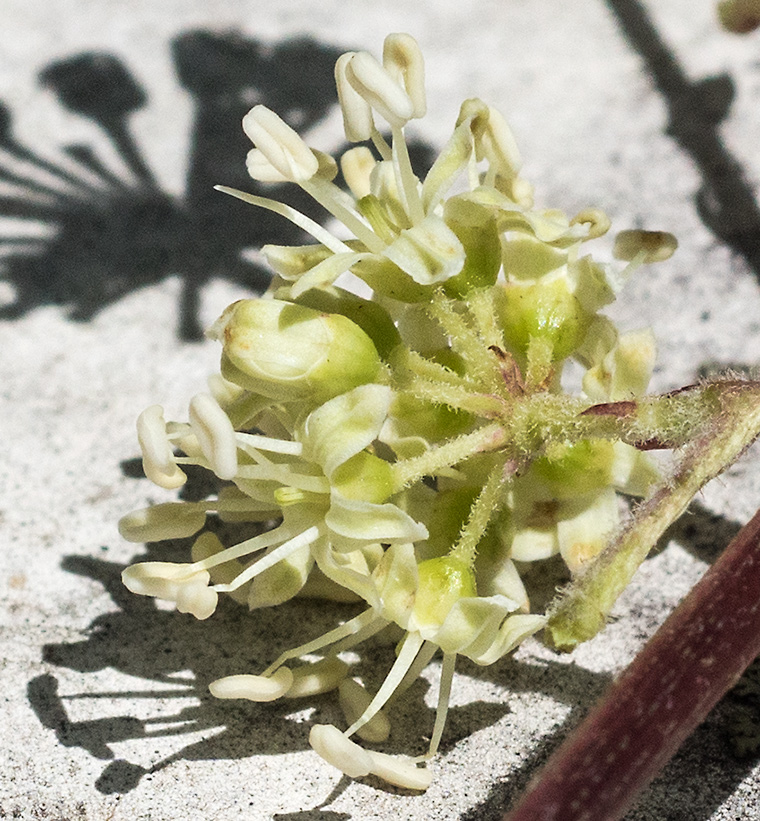
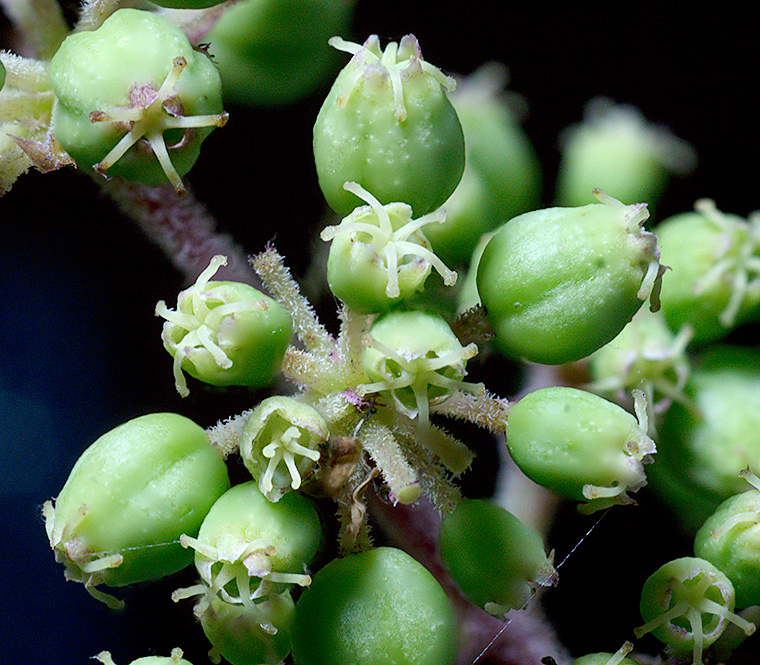
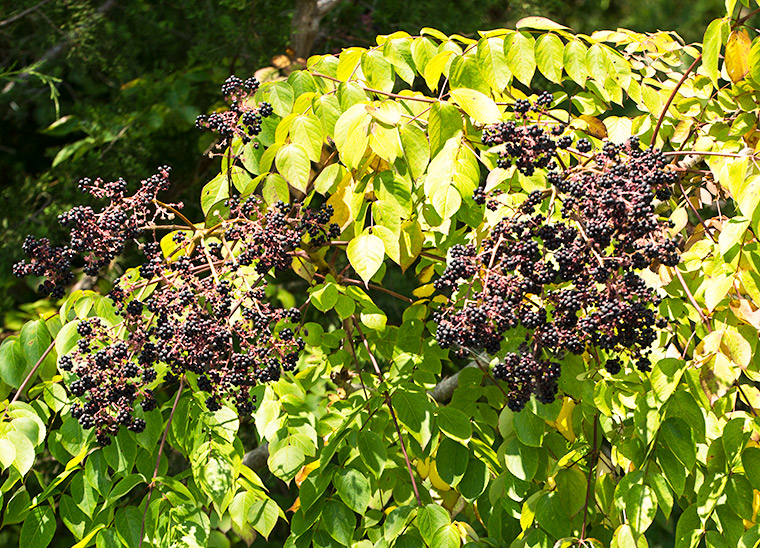
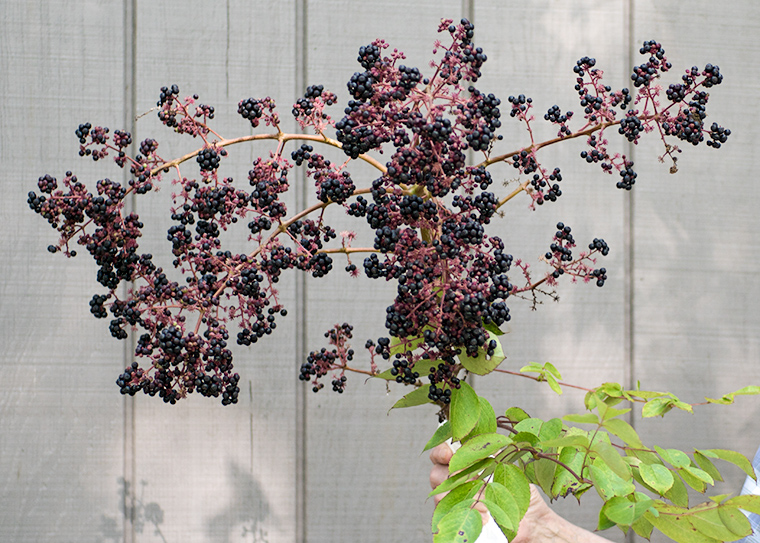
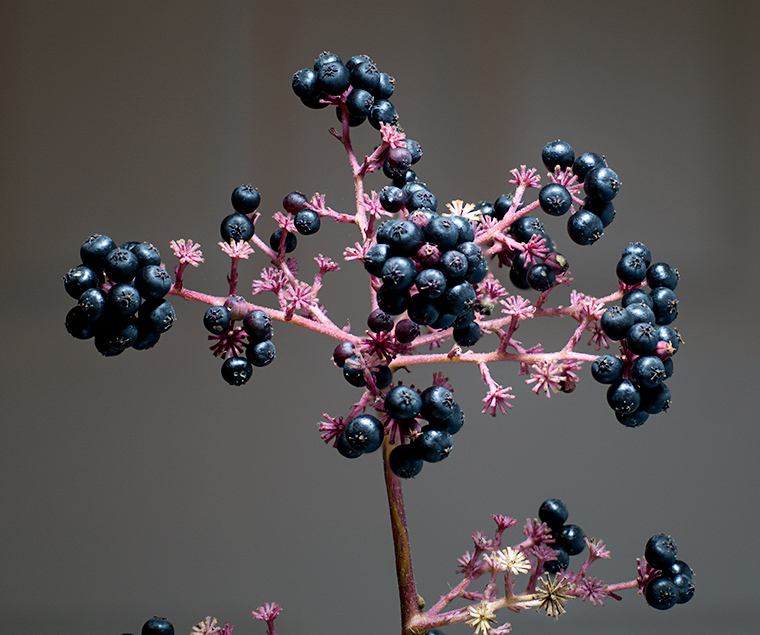
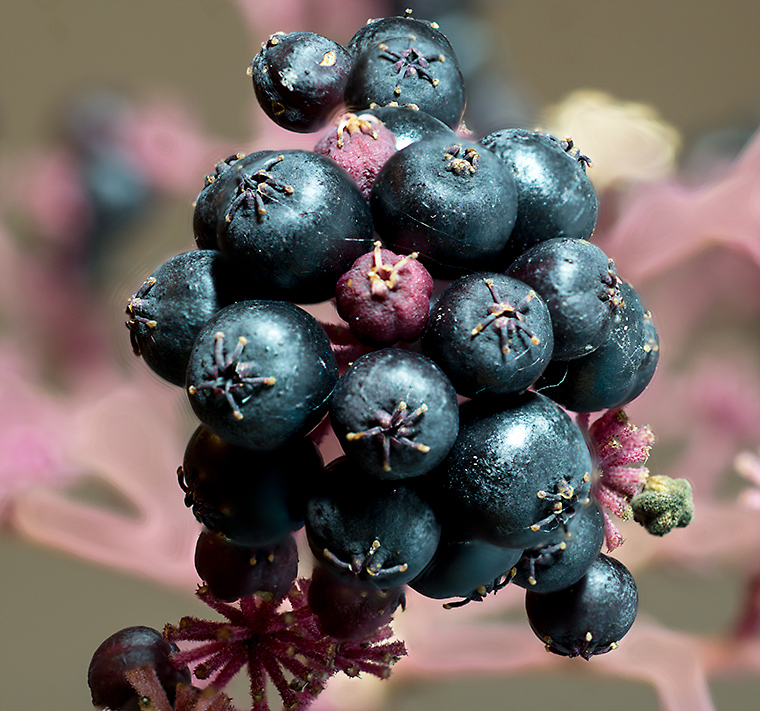
Gary, Many thanks for all the work you do with your nature posts. I enjoy each and every one that you put out. I especially liked this post on Devil’s Walking Stick. I have been in the woods a time or two and actually grabbed one to pull myself up an embankment. I only know of two places where these plants grow. I have on occasion seen them when in bloom along the side of the road. Very interesting plant.
Thanks a lot, George. Stop in and see us the next time you are in the area.